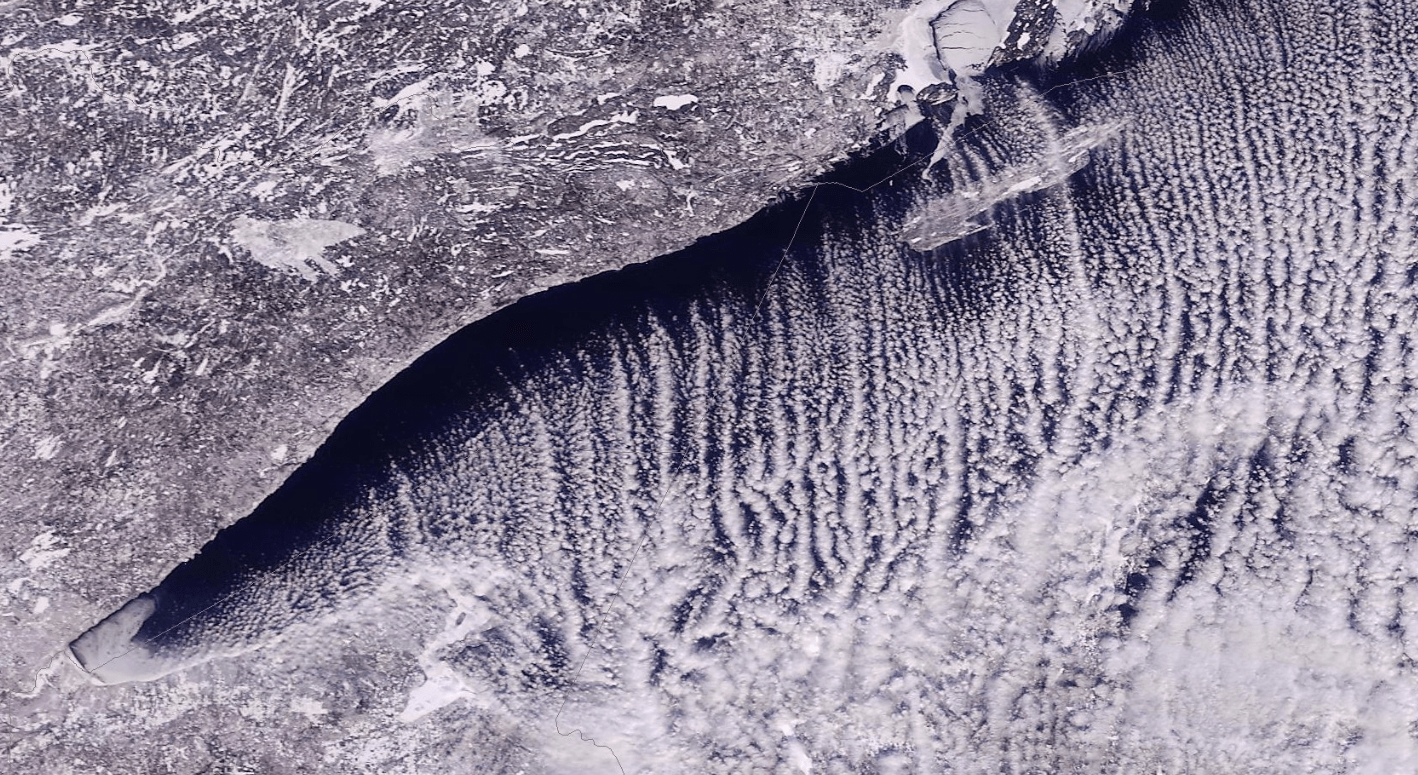Lake Superior lake-effect snow plumes visible from space
Plumes stretch 450 miles downwind across Lake Michigan

Go Deeper.
Create an account or log in to save stories.
Like this?
Thanks for liking this story! We have added it to a list of your favorite stories.
Weather geeks are geeking out over lake-effect snow plumes crossing Lake Superior and the Great Lakes.
The meteorologically impressive lake-effect snow plumes blowing across Lake Superior were visible Thursday in images from the National Oceanic and Atmospheric Administration’s GOES-16 satellite, 23,000 miles in space.

The plumes run in parallel bands and funnel lake-effect snow squalls downwind onto the south shores of Lake Superior.
Here’s another view from NASA’s MODIS Terra satellite, via the Duluth National Weather Service office.
Turn Up Your Support
MPR News helps you turn down the noise and build shared understanding. Turn up your support for this public resource and keep trusted journalism accessible to all.
450 miles long
The low-level air trajectory is pushing the Lake Superior plumes even farther downwind onto Lake Michigan Thursday.
Notice how the “cloud streets” continue and regenerate over the waters of Lake Michigan and push all the way into lower Michigan and Indiana. That’s a distance of 450 miles.

Anatomy of lake-effect snow
Lake-effect snowfall occurs when colder arctic air blows over relatively warmer lake water on the open Great Lakes. Smaller lake-effect events can also occur on some of Minnesota’s bigger lakes, including Red, Leech and Mille Lacs.
As the colder air blows over the relatively milder waters, heat, and moisture are exchanged and lake-effect snow squalls form and dump out on the downwind side of lakes.

Lake Superior on Thursday was just 8.7-percent ice-covered. Lake temperatures are around 34 degrees across the big lake.

Generally, you need a temperature contrast of about 30 degrees between the lake and the overrunning air mass to generate lake-effect snow plumes.



